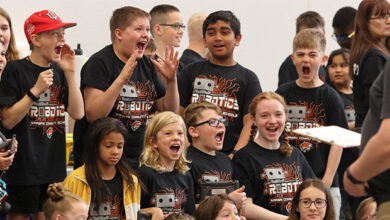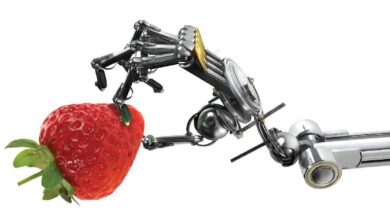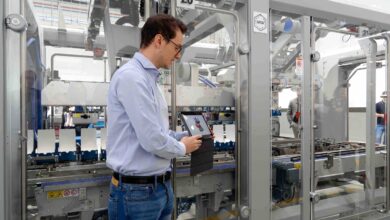Innovative Training Techniques Empower Soccer Robots with Human-like Agility

Embodied intelligence in robotics is making significant strides with the emergence of mini soccer robots displaying human-like agility and strategic play. Researchers have harnessed the power of deep reinforcement learning, training small humanoid robots to exhibit exceptional mobility and skill on the soccer field — outpacing traditional programming methods.
In their study, the agility of bipedal robots surpassed expectations as they walked, turned, and kicked with remarkable swiftness, adjusting their strategies fluidly during one-on-one soccer matches. Google’s DeepMind team’s research published in Science Robotics illustrates how these robots learned complex behaviors like anticipating ball trajectories and defending against strikes, contributing to our understanding of adaptive robotic movements.
The challenges of bipedal robot control, due to stability and hardware constraints, have led to a focus on refining fundamental skills. However, by adopting deep reinforcement learning, researchers trained cost-effective and accessible robots to achieve agility levels similar to that of living organisms in a multi-robot soccer context.
These robots underwent rigorous training in simulated environments before seamlessly transitioning to real-world situations, demonstrating their programmed skills and spontaneity in practical matches.
Summary: The use of deep reinforcement learning in robotics has enabled the development of mini soccer robots that can mimic the agility and strategic gameplay of humans. This advanced technique proves effective in overcoming the inherent stability and hardware limitations in bipedal robots, pushing the boundaries of embodied intelligence and paving the way for robots capable of complex behaviors in dynamic settings. Further research is directed toward harnessing on-board sensors for even more autonomous robotic functioning, with an eye on scaling up to multi-agent collaboration for team sports scenarios.
Embodied Intelligence in Robotics: The field of robotics is rapidly evolving with the advent of embodied intelligence, which aims to synergize the mental (cognitive) capabilities of a robot with its physical form and sensorimotor experience. This approach contrasts with traditional robotics that relies on precise, pre-programmed movements, instead enabling robots to learn from interactions with their environment using techniques such as deep reinforcement learning.
Market Forecasts: As a key area of growth in the artificial intelligence (AI) and robotics sectors, the market for intelligent robots is expected to expand considerably. According to various industry reports, the global market for robotics is projected to rise at a significant compound annual growth rate (CAGR). This growth is driven by factors such as the rising demand for automation, technological advancements, and the increasing application of robots in various sectors including manufacturing, healthcare, and service industries.
Industry Issues: Despite the progress, there are significant challenges that the industry faces. For the development of agile robots akin to the mini soccer robots mentioned, issues include achieving stability in bipedal robots, energy efficiency, and cost-effective manufacturing. Ensuring the safety of human-robot interactions is another critical challenge, particularly as robots become more integrated into everyday life and work environments.
In addition, there are also ongoing discussions about the ethical implications of autonomous robots, particularly regarding the potential loss of jobs due to automation and the use of such technology in military applications. Privacy concerns rise as well with increased sensory and data-processing capabilities of robots.
For further information on industry news, trends, and market forecasts, you can visit premier technology and robotics research hubs like IBM, Intel, and other leading entities in AI and robotics development.
In conclusion, the integration of deep reinforcement learning in robotics has opened a new chapter in the development of highly functional and adaptive robots, exemplified by the mini soccer robots. This research is not only advancing the field of embodied intelligence but also introducing new possibilities for how robots could be designed and utilized in various aspects of society. While this signifies a monumental leap in capabilities, it also propels us toward a future where ethical considerations and industry regulations will need to advance in step with technological innovations.

Natalia Toczkowska is a notable figure in digital health technology, recognized for her contributions in advancing telemedicine and healthcare apps. Her work focuses on developing innovative solutions to improve patient care and accessibility through technology. Toczkowska’s research and development in creating user-friendly, secure digital platforms have been instrumental in enhancing the effectiveness of remote medical consultations and patient monitoring. Her dedication to integrating technology in healthcare has not only improved patient outcomes but also streamlined healthcare processes, making her a key influencer in the field of digital health innovation.



